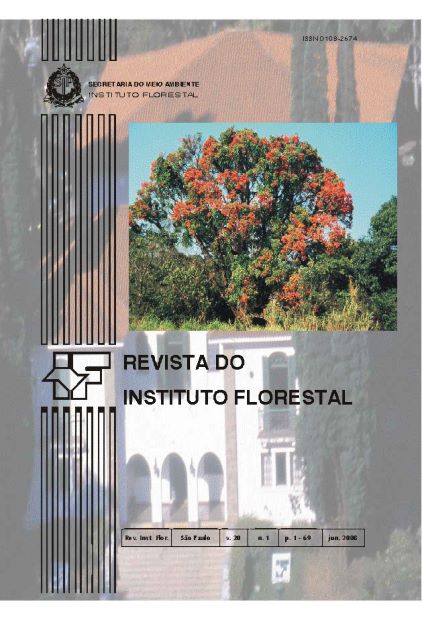“DATAMINING” DOS GENES DA CELULOSE SINTASE RELACIONADOS COM ESTs DE Eucalyptus spp.
DOI:
https://doi.org/10.24278/2178-5031.2008201900Keywords:
Eucalyptus spp, growth genes, datamining, TAGAbstract
This is a study about data mining of expressed sequence tags (ESTs) involved with cellulose synthase growth effect genes resulted from the Eucalyptus ESTs Genome Project (FORESTs) compared at aminoacids level. Using a sequencing of derived from cDNAs libraries induced and not induced by bacteria, were identified EST clusters EGBGFB1211D01.g, EGEZRT6201E10.g, EGCCFB1220G07.g, EGRFCL1206E01.g, EGEQST2006A06.g, EGRFCL1206E01.g, EGEQRT3001H05.b, and EGBFRT3106G11.g, similar to cellulose synthase proteins controlling growth effect in Arabidopsis thaliana, Gossipium hirsutum, Populus tremuloides, Zea mays, and Nicotiana alata, registered on National Center of Biotechnologies Information - NCBI. These mining results are important to improve Eucalyptus breeding programs.
Downloads
References
ALTSCHUD, S. F. et al. Grapped BLAST and PSI-BLAST: a new generation of protein database search programs. Nucleics Acids Research, Oxford, v. 25, p. 3389-3402, 1997.
BURN, J. E. et al. Functional analysis of the cellulose synthase genes CesA1, CesA2, and CesA3 in Arabidopsis. Plant Physiology, Rockville, v. 129, p. 797-807, 2002.
DOBLIN, M. S. et al. Pollen tubes of Nicotiana alata express two genes from different beta-glucan synthase families. Plant Physiology, Rockville, v. 125, p. 2040-2052, 2001.
ELLIS, C. et al. The Arabidopsis mutant cev1 links cell wall signaling to jasmonate and ethyleneresponses. The Plant Cell, Rockville, v. 14, p. 1557-1566, 2002.
EUCALYPT GENOME PROJECT (FORESTs). Disponível em: <https://forests.esalq.usp.br>. Acesso em: 25 abr. 2004 a 12 jun. 2004.
HOLLAND, N. et al. A comparative analysis of the plant cellulose synthase (CesA) gene family. Plant Physiology, Rockville, v. 123, p.1313-1324, 2000.
JOSHI, C.P. Xylem-specific and tension stress-responsive expression of cellulose synthase genes from aspen trees. Applied Biochemistry and Biotechnology, Clifton, v. 105, p. 17-23, 2003.
KALLURI, U. C.; JOSHI, C. P. Isolation and characterization of a new, full-length cellulose synthase cDNA, PtrCesA5 from developing xylem of aspen trees. Journal of Experimental Botany, 2003, Oxford, v. 54, n. 390, p. 2187-2188.
NATIONAL CENTER OF BIOTECHNOLOGY INFORMATION - NCBI. Disponível em: <http://www.ncbi.nlm.nih.gov>. Acesso em: 25 abr. 2004 a 12 jun. 2004.
PEAR, J. R. et al. Higher plants contain homologs of the bacterial celA genes encoding the catalytic subunit of cellulose synthase. Proc Natl Acad Sci, Washington, D.C., v. 93, p. 12637-12642, 1996.
SAMUGA, A.; JOSHI, C. P. A new cellulose synthase gene (PtrCesA2) from aspen xylem is orthologous to Arabidopsis AtCesA7 (irx3) gene associated with secondary cell wall synthesis.Gene, Amsterdam, v. 296, n. 1-2, p. 37-44, 2002.
WU, L.; JOSHI, C. P.; CHIANG, V. L. A xylem-specific cellulose synthase gene from aspen (Populus tremuloides) is responsive to mechanical stress. The Plant Journal, Oxford, v. 22, p. 495-502, 2000.
ZHONG, R. et al. Expression of a mutant form of cellulose synthase AtCesA7 causes dominant negative effect on cellulose biosynthesis. Plant Physiology, Rockville, v. 132, p. 786-795, 2003.















